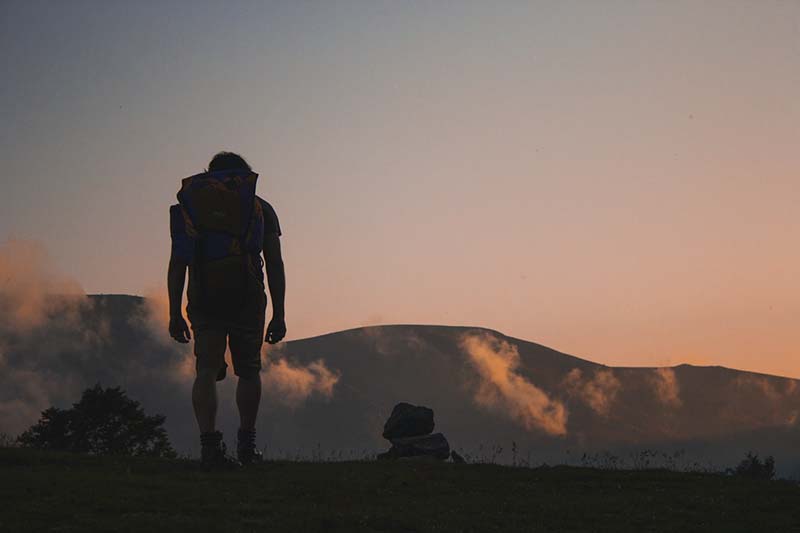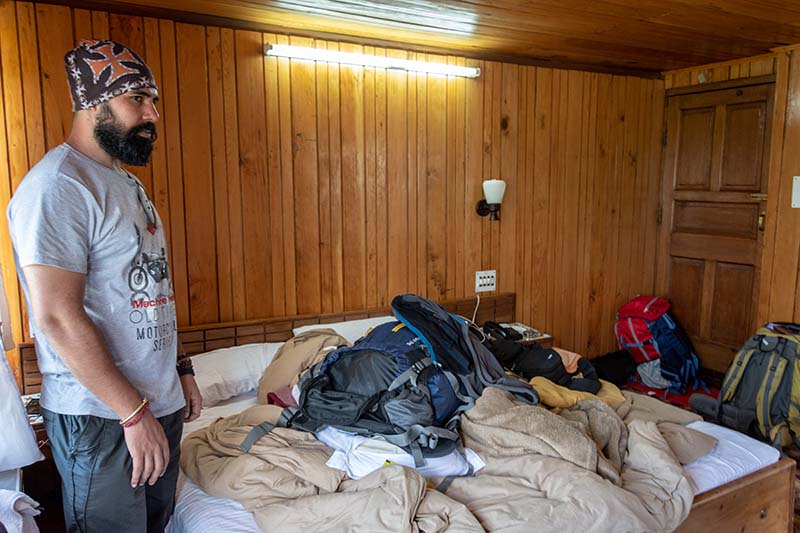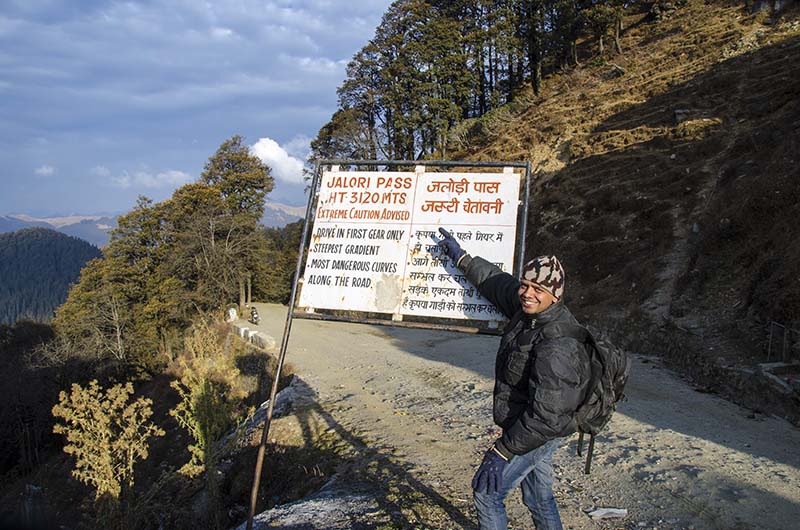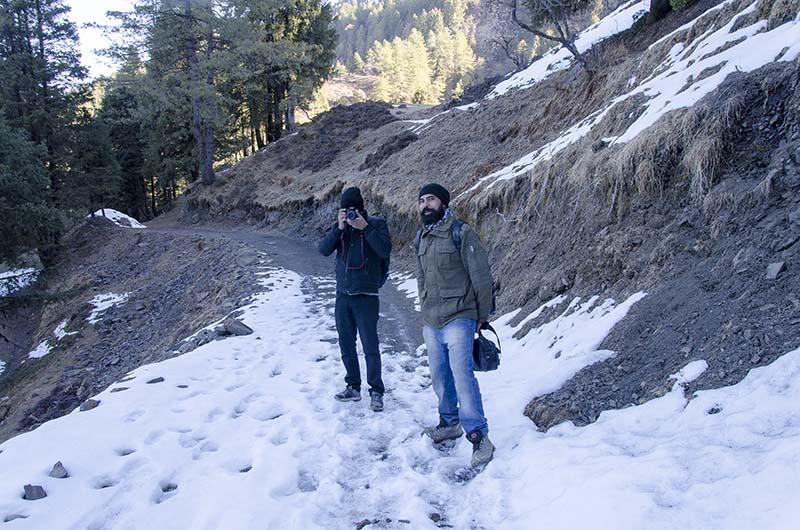Backpacking, this term was once associated with only a certain kind of travel community. But a lot of people are now opting for this minimalist and nomadic lifestyle of traveling. If you too fall into this category then mentioned below are a few backpacking tips for beginners to get you started.
Go back a couple of decades and the image you will get of a backpacker will pretty much be the same as a hippie. This was definitely not what qualified as a planned vacation and to some extent, I think it still isn’t.
But with that being said, I think it is still the best way to explore and experience the outdoors. Backpacking is what will give you an entirely new outlook of how you look at the world, nature, and traveling in particular. The more time you spend outdoors, the more you start appreciating life and get rid of the stress.
But this also does not mean that backpacking has to be an unplanned way of traveling. Some basic preparation must be done to help you make the most out of your journey and ensure that your trip remains safe and incident-free.
Mentioned below are a few important tips to help make your first backpacking experience an unforgettable one.
Quick Navigation
Backpacking Tips for Beginners
The first thing that you will need to pay close attention to is choosing the right backpack for you. An uncomfortable backpack will just mean unnecessary struggle and strain on your body. You will find it hard to keep it on your for long and may even end up getting a back or shoulder injury.
Also Read: Essential Items for Camping Trip in Cold Weather
How to Choose the Right Backpack
Before you go buy a one, think about what kind of trips you will be venturing out on and for how long. For a weekend trip, a backpack of 30 to 50 liters is usually enough. If you were going out on a long weekend for 3-4 days, 50 to 80 liters should work. Any longer than that and you may require a larger backpack but 50 to 80 liters is usually sufficient.
Once you have decided on capacity, the next important part will be of finding a backpack of your size. For this, I will recommend going to an actual shop rather than ordering online. This way, you will be able to look closely at a larger variety and inspect carefully before finalizing the purchase.
You can even out some weight in the backpack and walk around for a while in the store, just to make sure how it feels and if it was comfortable enough.
Most of the backpacks available today are internal frame packs. This is the one where support rods are built into the backpack and hidden from view. These packs are comparatively lighter and easier to carry. They sit on your back comfortably and are also more durable.
If you can, find a lumbar-shaped pack. These types of packs distribute weight more evenly, making it easier to carry it around. These also create a small space between your back and the pack, allowing air to pass. This will in keeping you cool and avoiding sweat.
Tips for Choosing the Right Backpack
Some other features that you should look for in a backpack are as mentioned below.
- Choose one that is made of water-resistant material. You may want to pour a little water on the pack to test before you buy it. Also, see if you can find a pack with a rain cover.
- There should be lockable zippers on the pack. I personally have had stuff stolen from my bags during a flight more than once.
- Your pack should have a padded hip belt and shoulder straps.
- You should look for a bag that has multiple compartments and allows you to break up your belongings into smaller sections.
- A bag that opens from the front rather than the top is slightly better when it comes to finding and getting your stuff.
- If you like to travel fast and superlight, you may want to review some frameless backpacks as well.
- Elasticized side pockets will come very handy to carry a water bottle or other similar objects.
- Some backpacks have removable daypacks as top lids that can detach and used as a hip-belt. These can be great if your travel plans include day-long hiking where you do not have to carry the entire backpack.
- Some packs come with a system that allows you to adjust its torso length. These may be cost you slightly more but can be a great investment.
- The weight of your backpack should be supported by your hips, not shoulders.
- Don’t buy a pack based on its looks or unfamiliar features or other details that won’t matter
Also Read: 10 Things to Remember when visiting India
What to Pack in your Backpack
Now once you have decided which backpack is best for you, let us now take a look at what items should you be putting into it. While this will be different for the kind of trip you were heading on and your personal choices, there are some essential items that will apply for everyone and must be brought.
I once read somewhere that a backpacking trip means that you bring only what you absolutely need for survival and this is true. You cannot pack just about everything when you know that you will be carrying it on your back. But at the same time, you cannot miss an essential item that you absolutely need.
The Ten Essentials
In any backpacking blog you read, you will find the mention of this term called The Ten Essentials. In simple words, it is a list of the ten most essential items that you will need on any backpacking trip. The purpose of this is to answer a simple question; can you survive for the said duration without any hassle?
Also Read: 11 Tips On Making New Friends While Traveling
These ten essential items are as listed below.
- Clothes: What clothes to bring will entirely depend on where you were headed and the weather. You should bring clothes that are comfortable, not too tight and dry faster.
- Food: Always pack some dry fruits, snacks, and chocolates.
- Water Bottle: Keep a provision of carrying water in your backpack.
- Navigation: These will include a map, compass or a GPS enabled device.
- Sun Protection: Bring a pair of sunglasses, sunblock lotion, and a hat if possible.
- First Aid: Keep a first aid kid inclusive of basic medicines, adhesive bandages, pain-relief spray, anti-septic lotion, and insect repellent
- Fire: You should have a lighter or a matchbox irrespective of whether you smoke or not
- Torch: Keep a torch and extra batteries in your pack.
- Knife: A swiss knife can be a good choice.
- Shelter: Bring some sort of emergency shelter to keep you dry and warm in case you get stranded on the trail.
Apart from these ten essentials, some other recommended items that you should pay close attention to are as mentioned below. You can use this as a checklist while packing your backpack.
- Shoes
- Phone / Camera charger
- Socks
- Underwear
- Identify & Address Proof
- Driving License
- Lip Balm and Moisturiser
- Padlock
- Flip Flops Or Sandals
- Toothpaste and Brush
- Towel
- Soap / Shampoo / Deodrant
- Hairbrush
Also Read: Safety Tips for Solo Female Travelers
Now that we know what kind of backpack you should be buying and the items you should be packing, let us now take a look at how you should be packing it all.
How to Pack your Backpack
When it comes to a backpack, there are two things that you already know. The first is that you have a limited amount of space and whatever you bring will have to be carried on your back. So you need to make sure that you are packing it in the most efficient way possible. What you need to take care of is
- Make the best out of the space available
- It should be easy to carry without putting too much stress on your body.
Tips for Packing your Backpack
When it is time to pack, it is best to divide your backpack into different zones or compartments. Generally, we tend to put the heavy items towards the bottom and the lighter ones at the top. This can actually be a little problematic.
Also Read: List of Necessary Items to Carry for Trekking
If you put everything heavy at the bottom, your pack will then just be pulling you down. If you put everything heavy at the top, it will start pulling you backward. Hence, a better practice is to put the heavy items around the middle of the pack, resting on your back. It will help you balance well and will make carrying the load easier.
As a general rule, I will recommend keeping the light items at the bottom, then the heavy items towards the center, and the medium-weight items at the top.
Another factor that you will have to consider is easy accessibility. Stuff that you will not need until camp can go towards the bottom. Other items that you may require often should be towards the top or in the side pockets.
Most of the packs come with a rain cover but you may also want to carry some additional plastic bags. This will help in keeping your phone, wallet, and other electronic items away from water and moisture both. Also, make sure that all liquids are well sealed.
Your pack should stay close to your body (use the compression straps) and should fit you well. The weight should be evenly distributed on all sides.
Do not leave too many items hanging on the outside of your pack. A couple of light items that cannot be packed are OK but if too many items outside means stuff getting lost or you losing your balance somewhere.
Other Tips
Below are a few other tips that can be of help.
- If you were just starting out and this was your first backpacking trip, you should really choose an easy destination. By easy, I mean it should be easily accessible, close to your home, and well connected by mobile phones.
- Do not go alone. It would be better to go with someone who has been on backpacking trips previously.
- Get a good pair of trekking shoes. Think of it as an investment for all your future trips. Running shoes are appropriate sometimes, but waterproof hiking boots are much better.
- Always be very vigilant. Be sure of where you were staying and with whom. The uncertainty factor that comes with backpacking is exciting but you cannot completely throw caution to the wind.
- Chocolates can really be a lifesaver. Pack a lot of them.
- Avoid packing canned goods or liquid sauces.
Backpacking Tips for Beginners – Conclusion
I hope the information above on backpacking tips for beginners was of help. If you have any questions or need any other details, please feel free to ask in the comments section below, or at our Community Forum, and I will be glad to answer.




